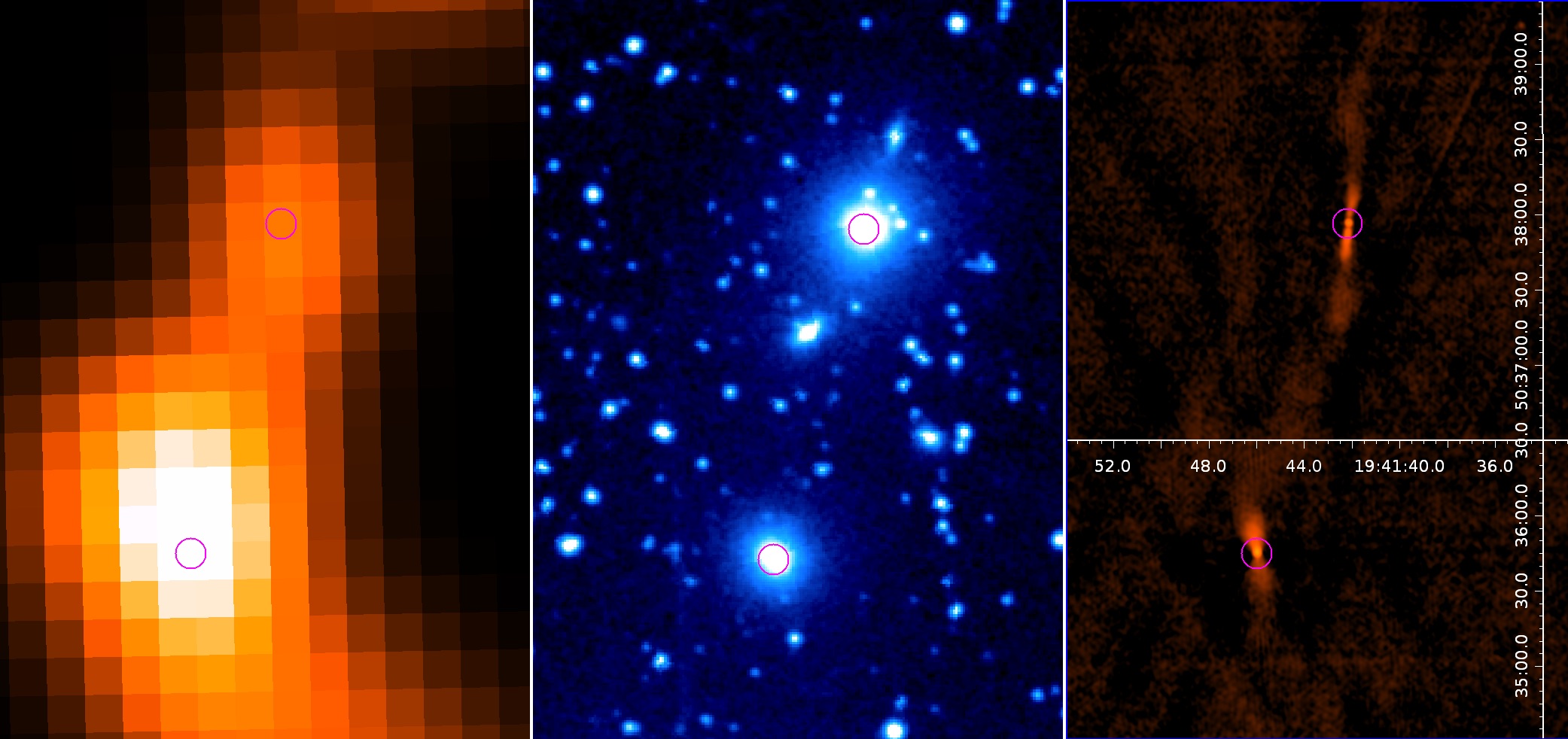As Project Director, Dr. Chandler heads up the VLA Sky Survey (VLASS), a massive effort that will map the entire sky visible from New Mexico (about 80 percent of the whole sky) over a period of seven years. VLASS will produce the sharpest radio view ever made of such a large portion of the sky, and is expected to detect 10 million distinct radio-emitting celestial objects, about four times as many as are now known. The data from VLASS will be made public.
First and foremost, I am an astronomer, curious about understanding the universe and our place in it. I have been a radio astronomer since finishing graduate school. This means that I use radio telescopes and radio techniques to further that understanding. Radio waves are able to penetrate the dust that can obscure visible light. Because of this, radio waves can tell us about everything from deeply embedded young stars to supermassive black holes, to energetic particles in the Solar corona and energetic relativistic jets — information that can be missed by searching only at other wavelengths. When the VLA Sky Survey project was proposed it represented a very exciting opportunity to be part of the process of discovery — a view of the universe that no one has seen before!
Because the VLA underwent a major upgrade in recent years, this new survey has higher resolution than any previous survey, including the two done earlier with the VLA. This means that it can detect the detailed structure of astronomical objects. In addition, we are covering the sky three times over to enable us to detect transient radio events such as supernova explosions, Tidal Disruption Events (super-massive black holes stripping apart nearby stars), mergers of neutron stars, and flaring young stars. One of the most exciting aspects of doing a survey like this is discovering things that were previously unknown.
For example, in one of the first test images we made, there was an interesting-looking object that was clearly a type of radio galaxy shooting jets of material into surrounding space, but when I looked it up in the astronomical literature it was listed as a young star! So we already found out something about that piece of sky that was not known before just by preparing for the survey!
Radio surveys like VLASS can have a long-lasting legacy. Data from previous VLA surveys is still yielding new results, as researchers mine the data to make new discoveries. The legacy value of such surveys is often judged by the number of times other astronomers use survey data, or how often they refer to the survey in their published papers. These statistics have shown that previous radio surveys are extremely useful to other astronomers to provide a more “complete” picture of the objects they are studying, as well as providing new ways of selecting samples of objects that will give us, for example, new information about how galaxies evolve through cosmic time. It is difficult to say precisely what the legacy of VLASS will be when we have only just started it, but my guess is that it will be something that depends on its unique high-resolution view of the universe, and its ability to detect obscured explosions.
Completing VLASS is going to take seven years because we are actually surveying the sky three times! This gives us the ability to find transient objects, and this is actually the first large-area radio survey specifically designed to do this. The time between re-observing is matched to the kinds of phenomena we are trying to detect. If we were to repeat the observations too quickly, then the transient objects might not have faded enough to be identified as variable.






